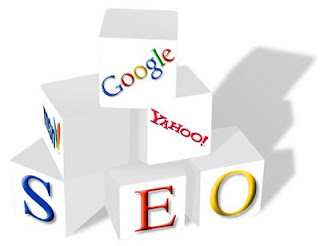On-site search engine optimization ( SEO ) involves some modifications and revisions of elements/areas of the website with the purpose of making them more search-engine friendly. Here is the list of top 10 elements of on-site SEO every webmaster should take time to ponder:

1. URL (Uniform Resource Locator)
URL is the link to any page of the site. It usually reflects the folder name and document name of the page of the site.
2. Title
Title tag tells both internet users and search engine spiders on the topic of any particular page of the site.
3. Description
Meta description gives search engine spiders a summary of what the page is talking about. It also supports the title of the page giving brief description both to the title and the content/body of the page. It is also referred as a search engine page snippet saved in its repository.
4. Keywords
Meta keywords are list of keywords or tags highly related to the title, description, and the content of the page. Some search engine crawlers ignore these tags but some are still spooking it.
5. Robot.txt
Robot.txt is an important on-site element which can allow or disallow following links found across the page. It is usually pre-defined to instruct search engine crawlers which links in the page must be followed or not.
6. Headings
Headings are often referred to as subtitles of the page. There are six ( 6 ) types of headings with tags h1 up to h6 ordered according to importance, where h6 being the least important.
7. Content
Content is inside the body tag of the page where the title, description, and headings are discussed intensively in details. It comprises all the text providing information and illustrations about the topic of the page.
8. Images
Images can be the least important element in SEO since spider-based search engines are generally text-based. Thanks to the “Alternate Text” tag, images can have text description targeting the desired keywords in a image-loaded websites.
9. Anchors
Anchors can be texts or images found within a page being linked to a particular page in the site where the text or image is being well-discussed.
10.Link Structure
Link structure is the navigational element of the site per page. It is a general diagram supporting easy access, both for internet surfers and search engine crawlers, of highly relevant pages within the site for every topic being discussed.
When one area will be modified for SEO-related purposes, the effect could be negligible. But if all essential elements will be optimized, there will be a cumulative improvement on the site’s performance in organic search results. Every little bit in SEO is very important as its positive impact on your site towards search engine results pages ( SERPs ). It can be magnified by a number of internet users and search engine spiders visiting any page of your site. Watch out for some SEO ideas, tips, do’s and dont’s of every element in this site in the future.

1. URL (Uniform Resource Locator)
URL is the link to any page of the site. It usually reflects the folder name and document name of the page of the site.
2. Title
Title tag tells both internet users and search engine spiders on the topic of any particular page of the site.
3. Description
Meta description gives search engine spiders a summary of what the page is talking about. It also supports the title of the page giving brief description both to the title and the content/body of the page. It is also referred as a search engine page snippet saved in its repository.
4. Keywords
Meta keywords are list of keywords or tags highly related to the title, description, and the content of the page. Some search engine crawlers ignore these tags but some are still spooking it.
5. Robot.txt
Robot.txt is an important on-site element which can allow or disallow following links found across the page. It is usually pre-defined to instruct search engine crawlers which links in the page must be followed or not.
6. Headings
Headings are often referred to as subtitles of the page. There are six ( 6 ) types of headings with tags h1 up to h6 ordered according to importance, where h6 being the least important.
7. Content
Content is inside the body tag of the page where the title, description, and headings are discussed intensively in details. It comprises all the text providing information and illustrations about the topic of the page.
8. Images
Images can be the least important element in SEO since spider-based search engines are generally text-based. Thanks to the “Alternate Text” tag, images can have text description targeting the desired keywords in a image-loaded websites.
9. Anchors
Anchors can be texts or images found within a page being linked to a particular page in the site where the text or image is being well-discussed.
10.Link Structure
Link structure is the navigational element of the site per page. It is a general diagram supporting easy access, both for internet surfers and search engine crawlers, of highly relevant pages within the site for every topic being discussed.
When one area will be modified for SEO-related purposes, the effect could be negligible. But if all essential elements will be optimized, there will be a cumulative improvement on the site’s performance in organic search results. Every little bit in SEO is very important as its positive impact on your site towards search engine results pages ( SERPs ). It can be magnified by a number of internet users and search engine spiders visiting any page of your site. Watch out for some SEO ideas, tips, do’s and dont’s of every element in this site in the future.
Top 10 Elements of On-Site Search Engine Optimization ( SEO )
 Reviewed by Unknown
on
10:54 AM
Rating:
Reviewed by Unknown
on
10:54 AM
Rating:
 Reviewed by Unknown
on
10:54 AM
Rating:
Reviewed by Unknown
on
10:54 AM
Rating:




No comments:
Post a Comment